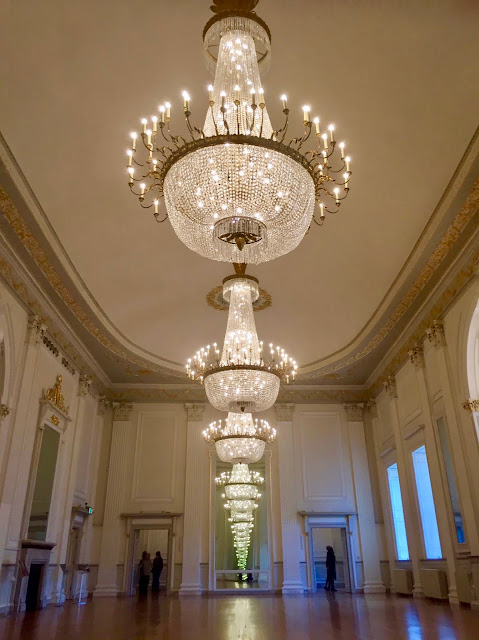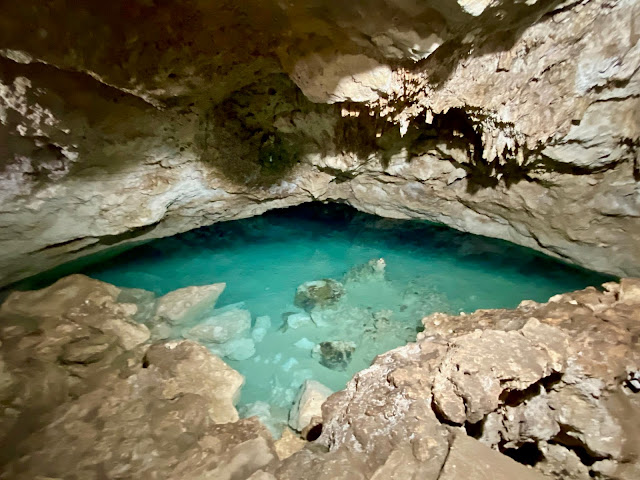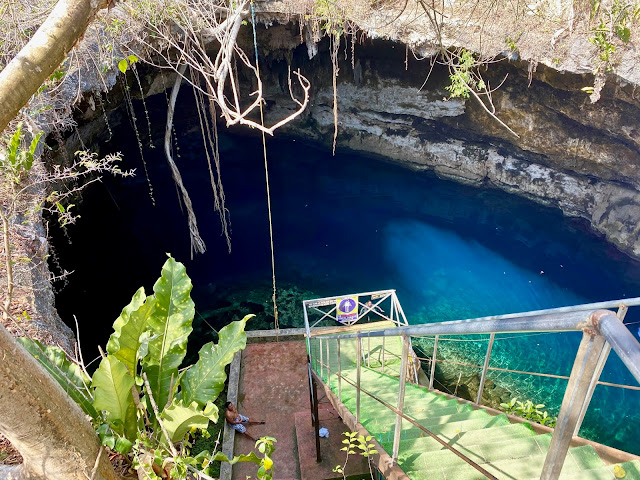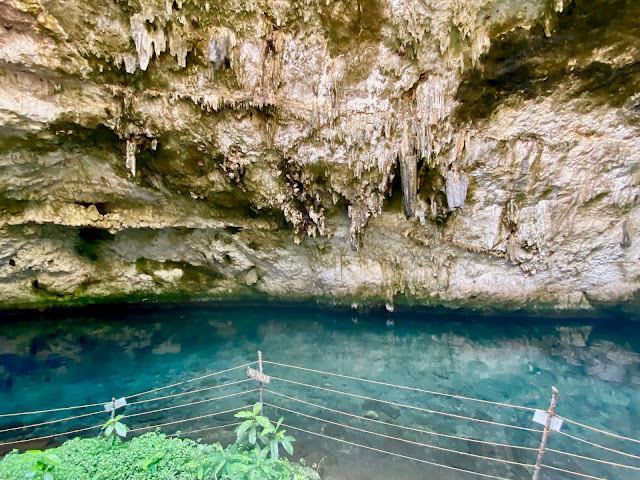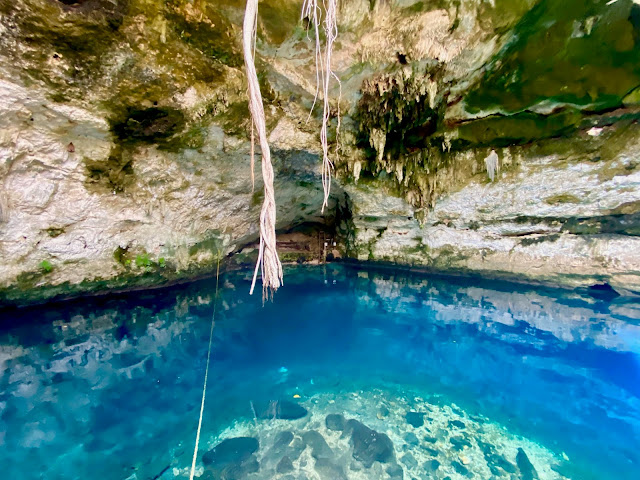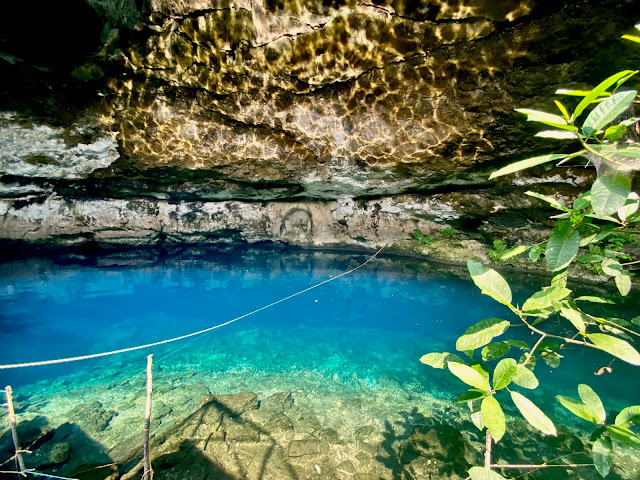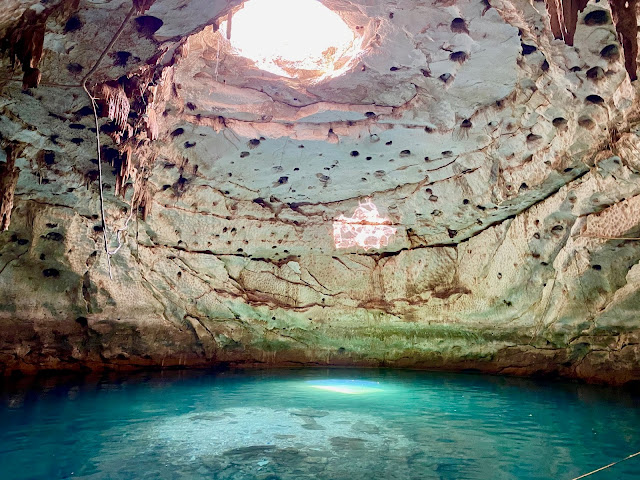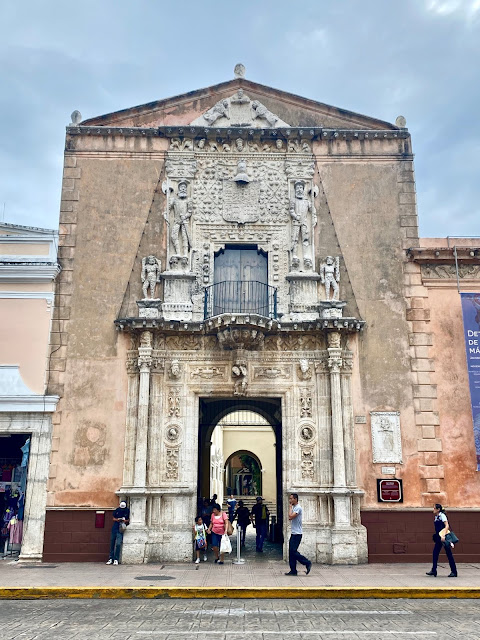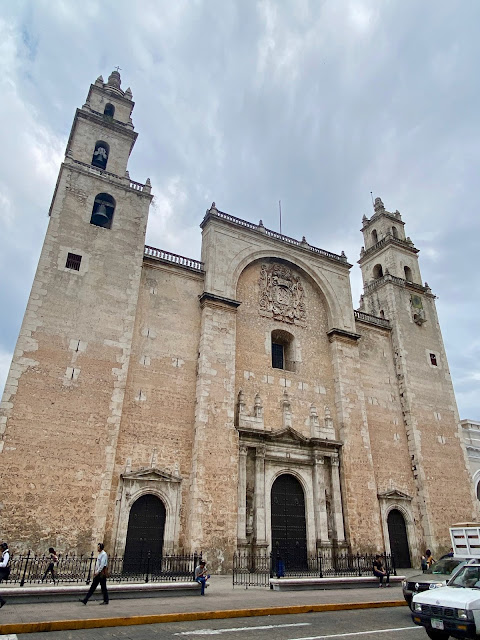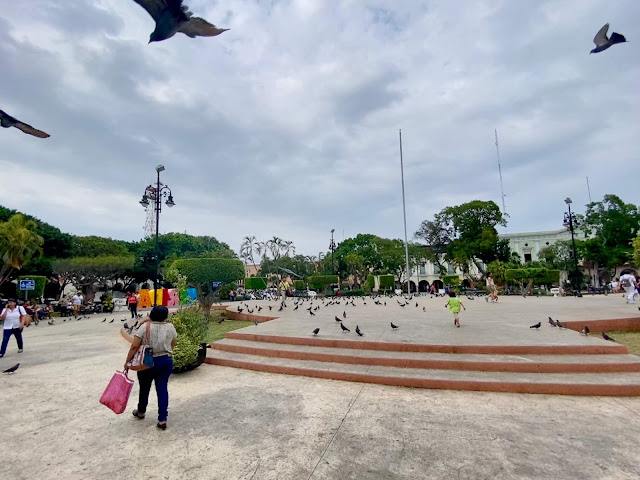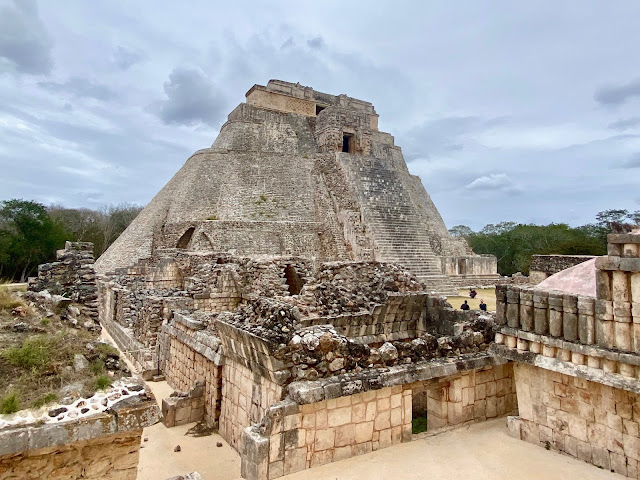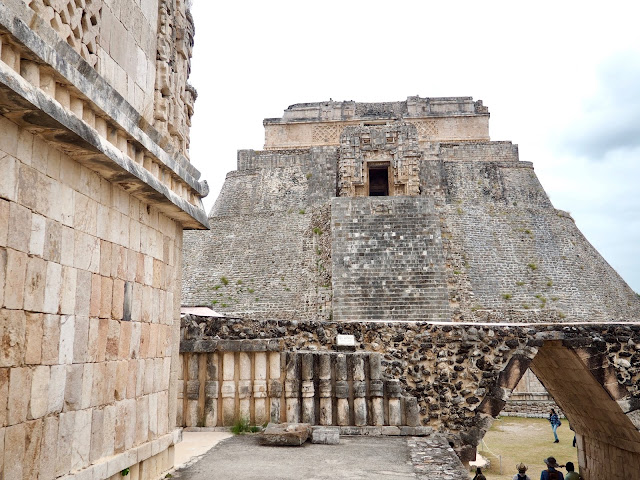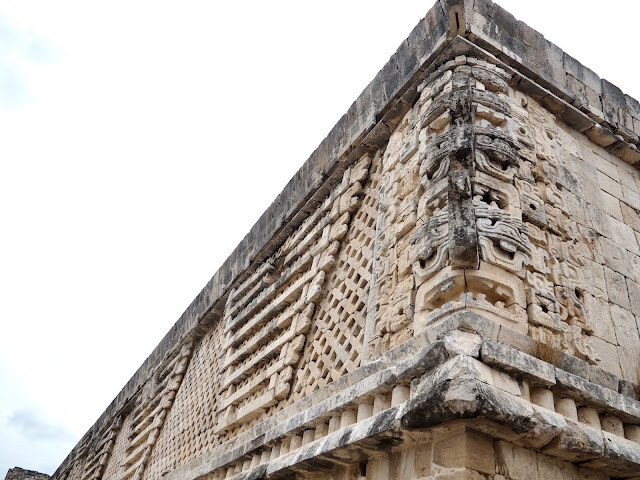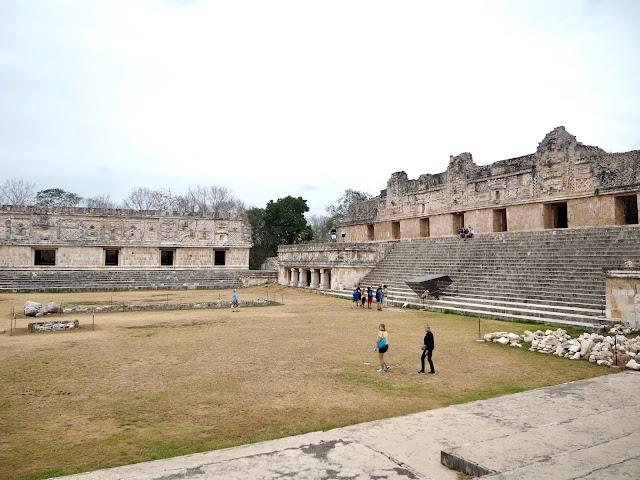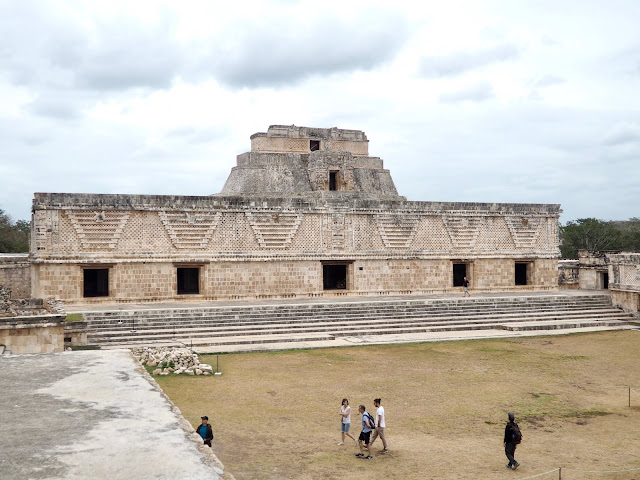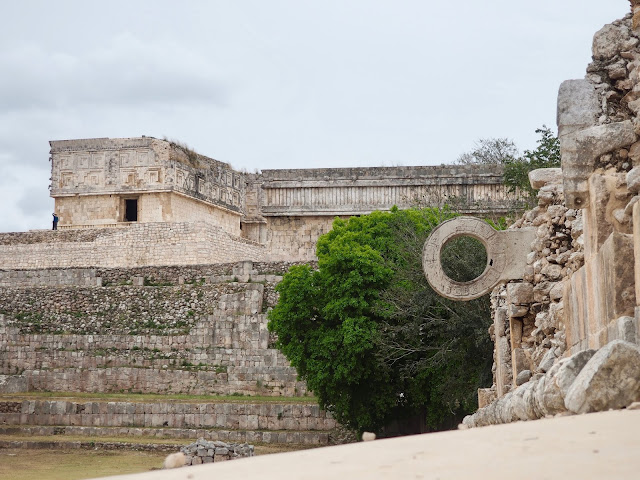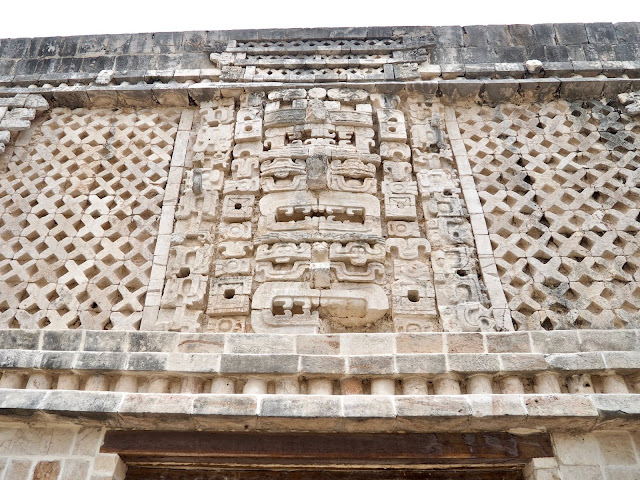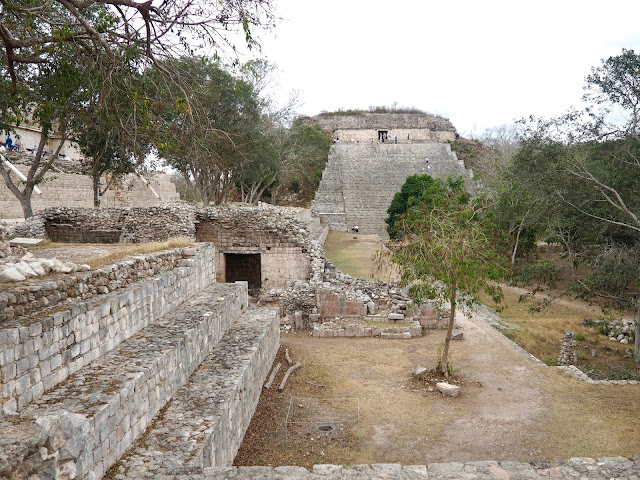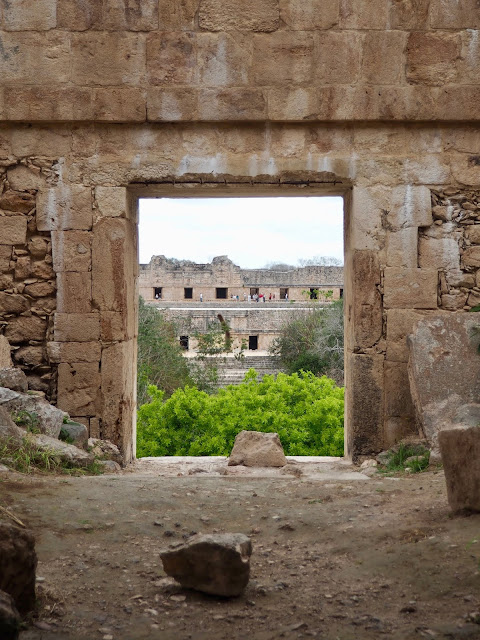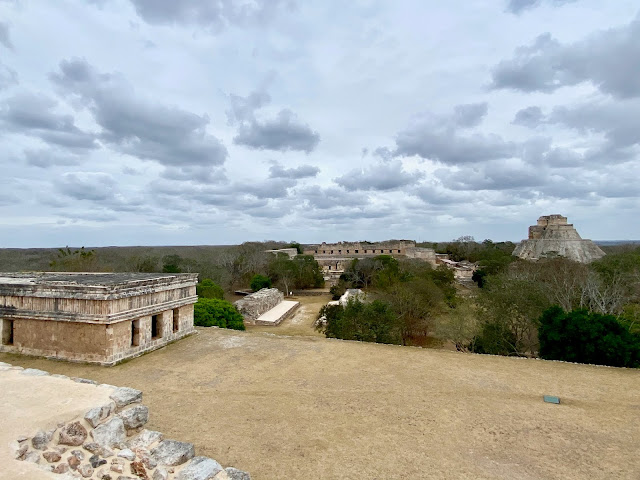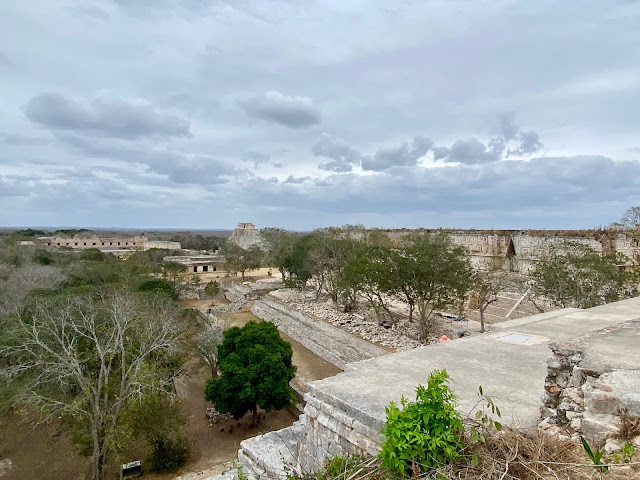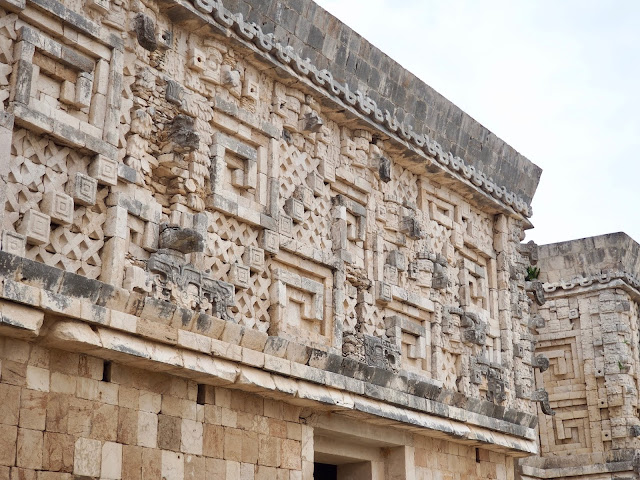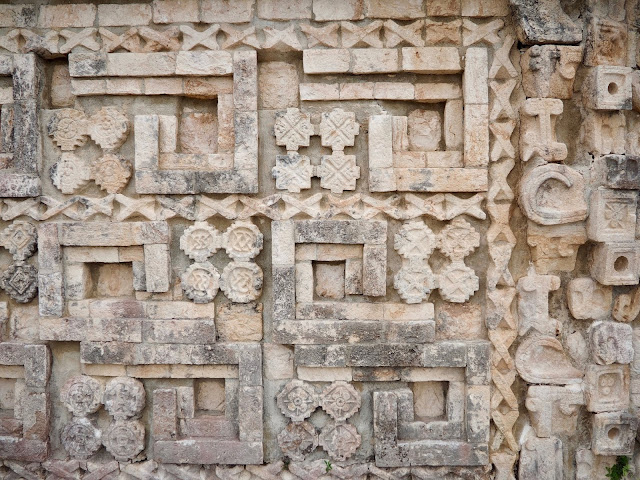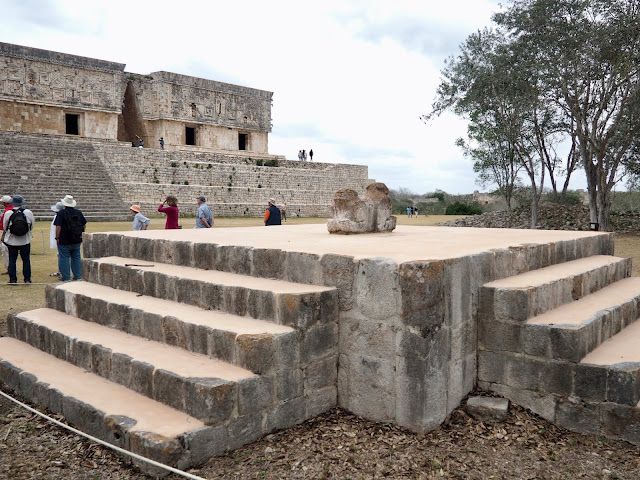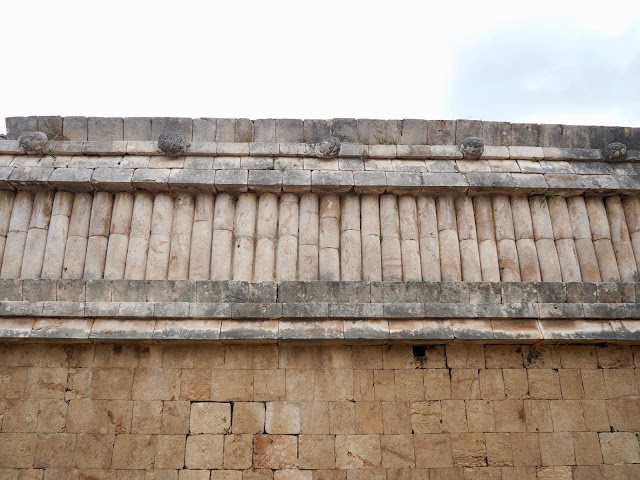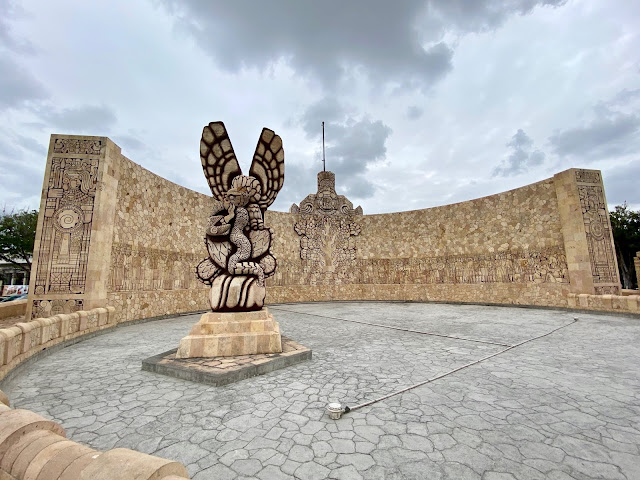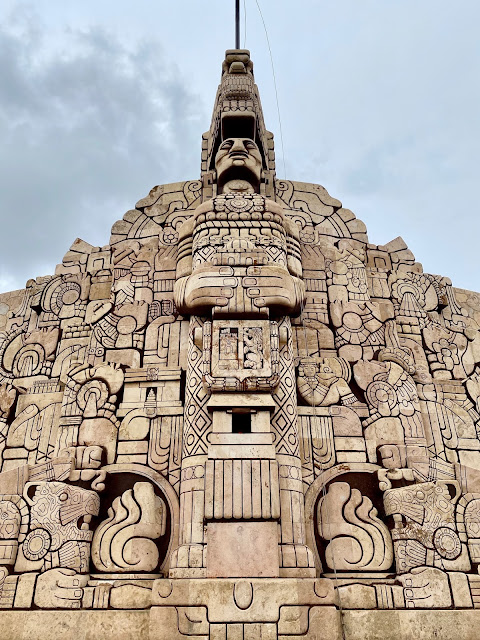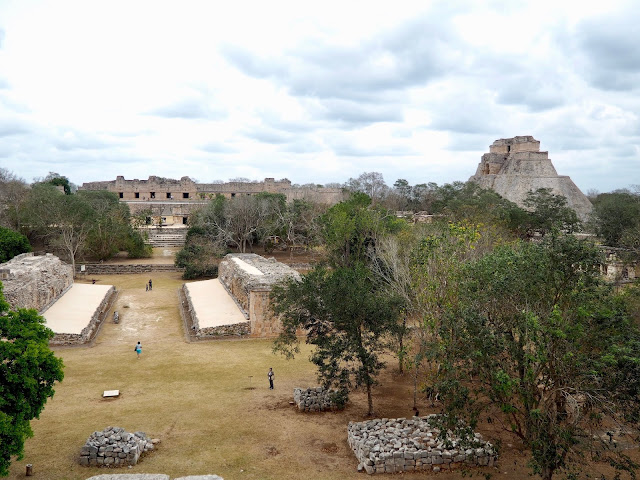
Merida | Mexico
Arriving in Merida late the night before after the long drive from Palenque, and only venturing out the hotel for food, didn’t exactly let us see much of the town right away! But that theme did sort of continue throughout our time there. Merida wasn’t a town that we immediately liked, like Oaxaca or Mexico City, but that doesn’t mean we didn’t enjoy it in the end. It was at a disadvantage, being quite late in the trip, as we had reached a point of near-exhaustion during our time here. However, it’s a town that grows on you: on the surface, it seemed like just another colonial town, with perhaps less to see than other we’d been to, but a good gateway for the rest of Yucatan state. But once you start exploring, there’s actually a lot of fun, quirky, hidden places – you just have to look for them!
Day One
What are Cenotes
As with every town we visited on this trip, we were also eager to explore the surrounding area. We had finally reached the Yucatan peninsula, an area I had seen a little of on my last trip to Mexico, and I knew there was some interesting natural scenery out there! Most importantly, the cenotes. The Yucatan peninsula is largely made of soft, alkaline limestone, the remnants of coral reef. Over millions of years, slightly acidic rain has seeped into the limestone and slowly eroded it. This created a vast underground water network, and hollowing out caves with natural pools in them – cenotes! Some are still hidden far below ground, while others’ roofs have collapsed, leaving them open to the sunlight. There are thousands of them all over the peninsula, of varying shapes, sizes, and scenery.
We were heading to the Maya village of Homun, where the local community takes care of several cenotes in the area. These are much smaller, less well-known cenotes than some of those further east in the bordering state of Quintana Roo (where I was last time). Cenotes are sacred to the Maya people though, as they view them as portals to the underworld. Most of them are still Maya owned and managed, meaning we were supporting the local community. We were visiting three cenotes, each one a short drive from the next, and of course, everyone was ready with their swimwear to take a dip!
Cenote No.1
The first one almost seemed to be in someone’s back garden. An older woman handed us a key, and sent us past a vegetable patch and washing line to its entrance. The key was for the box containing the electric light switch, which have been installed as this one was quite deep underground, with next to no natural light able to enter. We descended a narrow ladder through the entrance, where we were greeted with a large tree. It was growing from below ground and up through another hole nearby, while its roots wove through the walls of the cave. The cenote itself was further in still, as we climbed down through wide, flat rocks to the cave proper.
It’s like an other world down here, cool and quiet, away from the blinding sun and scorching heat above ground. You can definitely understand why they would be considered sacred. The water is perfectly clear too, and we had masks to dive below and observe the stalagmite formations, with tiny fish darting through them, like some lost underground city. The water dropped away at the edge of the cave, to complete darkness below, and there was a tunnel tucked away in the rock face, but it was too deep and narrow to go too far inside it. You have to take care whenever reemerging from the water there as well, to not hit your head on the ceiling and damage the stalactites. If you touch one, it stops growing due to the chemicals in our skin.
Cenote No. 2
The second cenote was quite a bit larger than the first, and also much more open to the sky. We caught a glimpse of its bright blue water on the walk there, as there was small hole looking down to it on the pathway. Then we rounded the edge of the main entrance, to see a brilliantly turquoise pool below us.
We entered via a wobbly metal staircase – only a few people were allowed on it at once! It dropped us on an island in the centre, whose shores slope down into the water, reaching the deepest points around the edges of the cave. I think this was my favourite of the day, as it was just so picturesque, like a tropical oasis. All sparkling blue water and lush green foliage hanging around the cave walls. Everything is dry and dusty scrubland outside in the heat, so the cool water is so refreshing in comparison.
There was plenty to explore inside as well, with ropes strung across from the island to the cave walls to rest on, and a rope swing off the island. There was a ‘living room’ in one side of the cave, a small alcove with spaces to sit. Although, most of us chose to stay in the sunny water, rather than this cooler, shady corner. We saw an iguana lurking in a corner, sneaking between the rocks and foliage there. The most unusual thing was definitely the birds – a whole flock of them continuously swirling around in a huge circle, their twittering filling the air! I spent a good while lounging on the rope in the sunniest part of the cenote. Occasionally diving below the surface to explore the cave floor, going as deep as I could without my ears popping painfully!
Cenote No.3
The third and final cenote definitely had the coldest water of the three, being the deepest below ground! It had the steepest entrance as well, more like a ladder than a staircase, especially since you were recommended to go down it backwards. This one had a great tree growing up through the entrance as well, alongside the first ladder, and the roots continued all the way down past the second and into the cave, where they hung like vines across the ceiling. There was one tiny hole in the roof here, letting a small halo of light down into the water.
The cave was lined with the most intricate and impressive stalactite formations of the three we’d seen that day. The water was certainly cold, yes, and the darkness here meant that although the water was still clear, you couldn’t see that much, since everything dropped away to black below the surface pretty quickly. The exception was the mound of earth in the middle, creating a shallower island to rest on, though none of the rocks actually emerged above the water level.
Tulum’s cenotes
I enjoyed these cenotes just as much as I did on my last trip to Mexico, but it was a somewhat different experience this time. The ones near Tulum were much bigger, and perhaps a little more jaw-dropping since it was my first time seeing cenotes. It makes sense that the most idyllic looking ones though are also the busiest, so although these were a little less grand, they were much more secluded. Where last time, it felt like a jungle swimming pool, this was more like a mysterious descent into that underworld space so sacred to the Maya. After we’d finished swimming in the last one, we reemerged into the midday heat to dry off and return to Merida by early afternoon.
Exploring Merida
Back in the town, we had a short orientation walk, since everyone had been too tired for it the night before. Like all Mexican towns, everything is centred around the Zocalo, which has the cathedral alongside. Our leader pointed out a couple of buildings and museums of note to consider visiting later. But overall, our initial impression was that Merida itself doesn’t have huge amounts of things to do and see. It does serve as a good base for the rest of Yucatan of course, and is far less commercial and touristic than places further east in Quintana Roo, like Cancun.
It’s historically significant as a Spanish colonial capital as well, founded by Francisco de Montejo in the 16th century, and has plenty of their architecture on display. We soon realised that in order to preserve the buildings, it’s not always obvious from the outside what each one is used for. There’s actually all sorts of unique, independent shops, restaurants and bars on offer, once you take a closer look in the windows! So it retains this old world charm while wandering the streets, while hosting many modern, ‘hipster’ businesses inside.
Cantinas
We had lunch together as a group, in La Chaya Maya, trying some of the food local to the Yucatan peninsula. Much of the group dispersed after that, but Cintia and I continued on to Cantina La Negrita, a bar with live music and an outdoor courtyard. As well as being a fun, lively place to hang out in, this is also a very historic bar. There are cantinas all over Mexico, as there have been for years, with their iconic swinging saloon-type doors. Historically they were only for men, but in more recent years they have been opened to all, usually with a bar in the front and dining area in the back.
La Negrita has actually been here for more than 100 years now, and where it was once frequented by professional men, it is now a popular, lively neighbourhood bar for all. The music was a Cuban group, and we enjoyed some local cocktails and grazed on the ever-rotating selection of bar snacks continuously left on our table. The place isn’t allowed to stay open past 10pm, so just beforehand we switched to another bar, owned by the same people. Salsa lessons were taking place and we stayed for a couple more rounds before heading to bed.
Day Two
Uxmal Pyramiads
For our second day in Merida, Cintia and I opted to do another half day trip, heading inland to the Maya pyramids of Uxmal. They’re about an hour away from Merida, and had come highly recommended due to the size of the structures, and the intricacy of the stonework. Initially we though we might have been tired of pyramids by this point in the trip, but as we’d concluded that there wasn’t a huge amount to do in Merida itself, we decided to check them out anyways.
We did opt out of a guided tour though, since we’d had one in Palenque, and would be having another in Chichen Itza, so we wanted to just roam by ourselves this time. Uxmal is also a little pricier than some of the sites we’d been to earlier in the trip, by it proved to be worth it in the end. It’s a Late Classic Maya city, built mainly in the 9th century, and led by the Xiu family, in alliance with Chichen Itza. Less archaeological research has been done here compared to other sites. It’s assumed that the population began to decline here in the 11th century, with the fall of Chichen Itza to the Toltecs, and a shift in Maya power in the region.
Pyramid of the Magician
On entering, we were immediately greeted by the massive Pyramid of the Magician – not quite as big as the Pyramid of the Sun back in Teotihuacan, but still highly impressive! It doesn’t have such a wide base, so the height seems larger in comparison. It was surrounded by the Governor’s Palace, centred around a huge courtyard, the Nunnery Quadrangle (names chosen by archaeologists which don’t necessarily reflect the Mayan purpose of the buildings!). Although we couldn’t climb the Pyramid of the Magician itself, we could access plenty of these other buildings, exploring dark rooms with lizards scampering through, and climbing up on the platforms overlooking the courtyard.
The most remarkable thing about Uxmal though is the stonework, which is some of the best preserved we’d seen on the whole trip, second only to Mitla perhaps. Every facade is covered in such detailed, intricate carvings, depicting all sorts of glyphs, gods, creatures, and events; serpents have a prominent place in the iconography.
Many of the corners show the face of Chaac, the Maya rain god. This is a very dry area of the country, mostly dry grassland, which doesn’t see much rainfall, so the Maya would pray to Chaac regularly. He can be identified by his long protruding nose – pointing up or down depending on whether they were asking for rain or giving thanks. He is also the god of fertility, so you can sometimes spot penises protruding from his ears! Many of these were later removed by priests, but a lot of them remain in Uxmal!
Ball Courts & Temples
Beyond the main courtyard we came to a small ball court: the ball game was a very important event in the Maya world. It’s far more than just a game, it’s actually a whole ceremony representing stories of the gods and celestial movements. Winners of the ball game were regarded with the utmost esteem, while losers were often executed. Interestingly, they could touch the ball with their arms, legs, elbows, hips… but not their hands or feet!
There were other small buildings nearby, before we reached two more large pyramids at the far side of the complex; the Grand Pyramid and the South Temple. We were able to climb these, to enjoy views looking out over the whole complex. There was plenty more stonework to examine around here as well. I particularly liked the House of the Turtles, which has turtle carvings around the edges of the roof. We also found the House of the Pigeons very unique, a long facade with small stepped points along the top, named because it resembles a pigeon coop!
Uxmal definitely stands out as one of my favourite archaeological sites of the trip, because of how unique some of these buildings were, and the preservation of the stonework – you could honestly spend hours poring over all the details in here! It’s also much quieter, with fewer visitors than many of the other sites we’d been to, and we relished having that peace, and the space to explore it almost by ourselves. We probably spent about two hours inside the site though, before embarking on the trip back to Merida.
Monument to the Homeland
We spent a little time exploring more of the city that afternoon, starting with the Monumento a la Patria, the “Monument to the Homeland”. It’s in the centre of a busy roundabout, but there are actually police in the area who halt the traffic to allow people to cross to see the monument up close! This huge monolith-like sculpture depicts the history of Mexico, from the Pre-Hispanic to the present.
It features the site of Tenochtitlan, the ancient city where Mexico City now stands, founded in a lake where the legendary eagle stands on the cactus devouring a serpent, as shown on the Mexican flag. There’s Maya symbology, with a ceiba tree and a great warrior figure. Plus the crests of all the states of Mexico, and hundreds of historical figures and dates of significant events from the colonial era. We wandered all around it, trying to take in as many details as possible!
The monument stands at the end of the Paseo de Montejo, a long boulevard lined with magnificent mansion homes. These were homes of the wealthy during Merida’s economic peak in the 19th century. This derived from the henequen industry, a native Yucatan plant whose fibres were used to make ropes and textiles. The industry declined again in the 20th century, with the invention of synthetic fibres, and many of these homes now stand empty and abandoned.
Time for a Rest
We stopped for lunch in a seafood restaurant – a cuisine we hadn’t had much of during the trip thus far, especially since we’d spent no time by the coast so far! It was a nice restaurant, and summed up what I was explaining earlier. From the outside, it looks like another simple, colonial building, but inside is full of quirky decorations and historic photos. I’d started paying more attention to the windows of buildings by this point, trying to see what surprises lay inside each one!
After this late lunch, we returned to the hotel and that was actually it for Cintia and I for the rest of the day! We had talked about going out again to see some of the places pointed out on the tour the day before. But we (especially me) were utterly exhausted. I had been a bit quiet and dreamy all day, but I was now bordering on grumpy and short-tempered.
2 Days in Merida, Mexico
We’d been having a fantastic time on the trip, but it had been jam-packed, not to mention some long travel days. It’s a constant balancing act I find when travelling: the desire to do and see as much as possible in these exciting new places, but also not burn yourself out entirely in the process. Although we’d ben trying to rest at times, especially napping during the long journeys, and not having big, late nights out, but we had definitely worn ourselves out by this point. It was inevitable that it would happen eventually, and we just needed the rest of that afternoon and evening to sleep and rest and do nothing!
It was shame in some ways, as we had only now started to realise that Merida does have a lot of fun, interesting places to check out, once you start to scratch the surface. But equally, we had done a lot already with our time there! Despite not being enamoured by the town from the beginning, it proved to be definitely worth visiting in the end, as the cenotes and Uxmal were both excellent trips for me! The Yucatan peninsula is the capital of tourism in Mexico, but where Cancun and Chichen Itza and Playa del Carmen (some of our final destinations) are highly commercialised and full of luxury resorts and package trips, Merida remains a bit more untouched and uncorrupted by it all.

Palenque | Mexico
You May Also Like
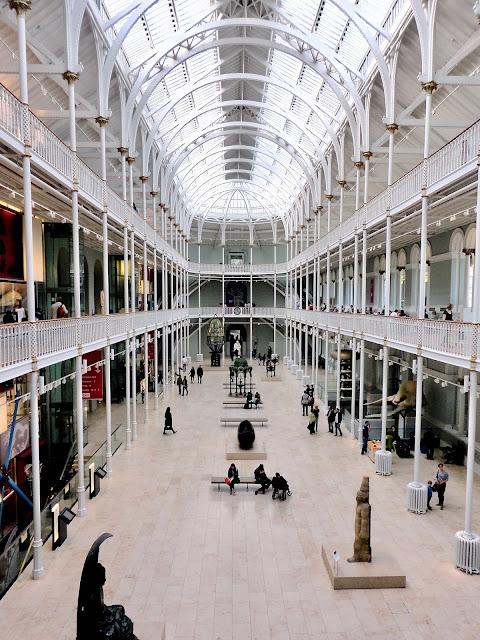
Things to Do in Edinburgh on a Rainy Day
14 October 2019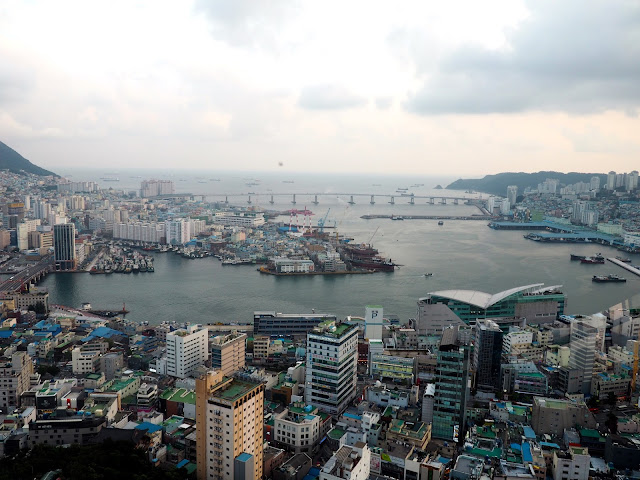
South Korea | 4 Month Update
24 December 2016